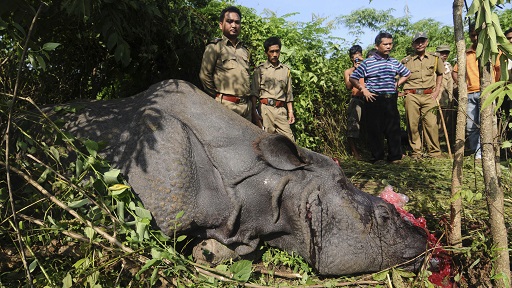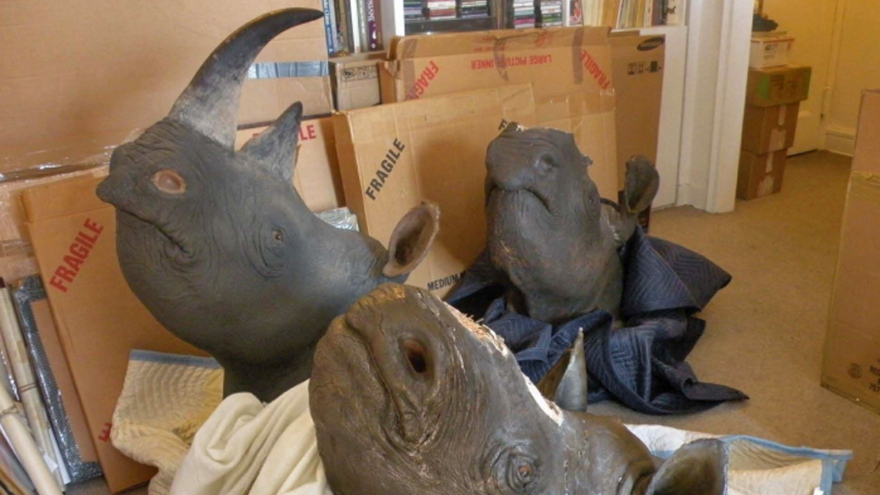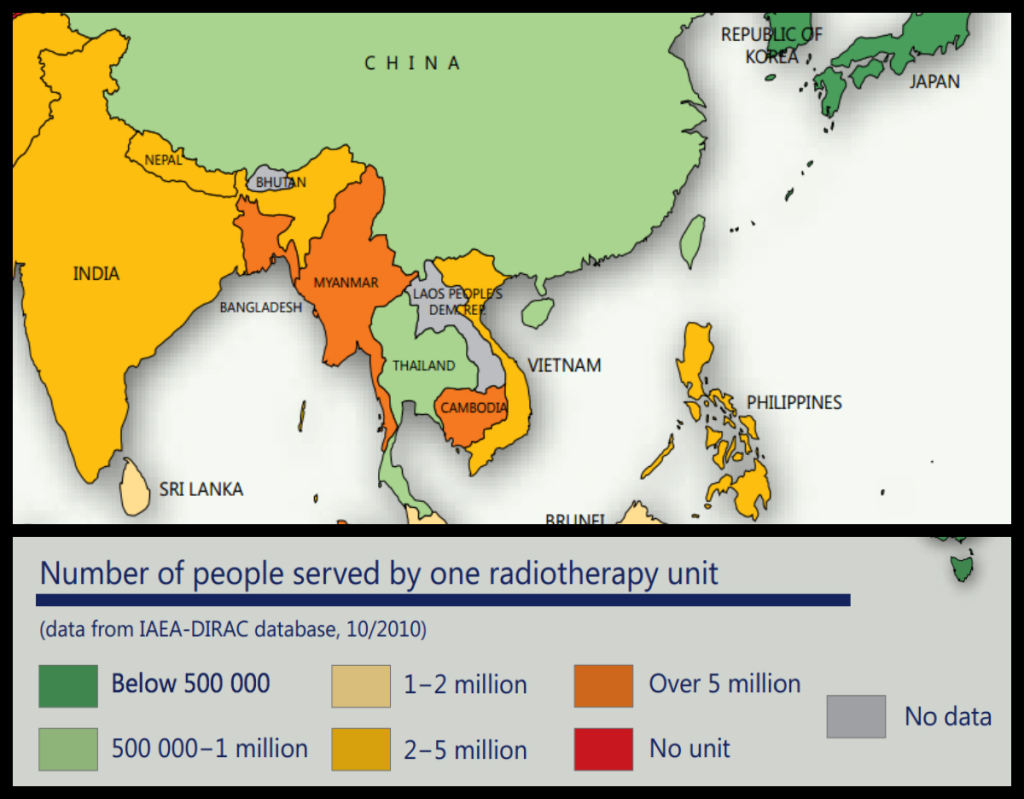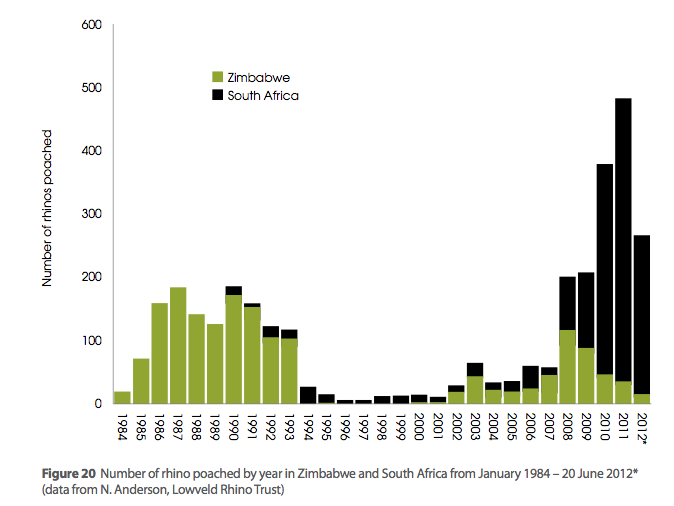And this wasn't the first time. A rhino-head heist spree swept Europe in 2011, as thieves raided museums and auctions houses in seven countries, prompting 30 investigations by Europol, 20 of which are ongoing. Similar heists have also been on the rise in Africa, as well as in the odd American backwater town. Meanwhile, an online business thrives as well - including one dealer on Facebook who only accepts bitcoin.
What is driving this "highly organized" crime ring?
If you guessed "China," you were wrong. The answer is Vietnam. The country's appetite for rhino horn is so great that it now fetches up to $100,000/kg, making it worth more than its weight in gold. (Horns average around 1-3 kg each, depending on the species.)
Behind the mysterious craze for rhino horn
The weird thing is that the surge in Vietnamese demand is fairly recent. Though rhino horn elixirs for fevers and liver problems were first prescribed in traditional Chinese medicine more than 1,800 years ago, by the early 1990s demand was limited. Trade bans among Asian countries instituted in the 1980s and early 1990s proved largely effective in quashing supply, with some help from poaching crackdowns in countries where rhinos live. Meanwhile, the removal of rhino horn powder from traditional Chinese pharmacopeia in the 1990s had largely doused demand. In the early 1990s, for instance, horns sold for only $250-500/kg (pdf, p.85). And only around 15 rhinos were poached in South Africa each year from 1990 to 2007.
But things started changing in 2008. That year, 83 were killed, followed by 122 the next year. By 2012, that number had hit 688. Here's a look at how many rhinos were killed, on average, each day:
The cancer-zapping miracle drug?
What happened in 2008 to prompt a resurgence in demand? The closest guess is a rumor that swept Vietnam in the mid-2000s that imbibing rhino horn powder had cured a Vietnamese politician's cancer. That rumor persists to this day. And note that this has nothing to do with traditional Chinese medicine. As Huijun Shen, the president of the UK Association of Traditional Chinese Medicine explained to Nature magazine, there's no record of using rhino horn to treat cancer in nearly two millennia worth of Chinese medical texts (p.23).
In Vietnam, however, at least some respected doctors vouch for rhino horn's cancer-curing properties. One woman who purchased $2,000 worth of horn powder on her doctors' advice.
Rising standards of living are driving up demand
So why are Vietnamese willing to shell out thousands for the pharmacological equivalent of chewing your fingernails? The short answer: wealth. Vietnam's tally of multimillionaires has grown 150% in the last five years. The Convention on the International Trade on Endangered Species notes that this rising wealth is "inflating a bubble of demand for rhino horn" (pdf, p.3). This chart of retail sales hints at how rapidly Vietnamese consumer spending has picked up in just a few years:
But as in many fast-developing countries, the quality and availability of cancer care in Vietnam hasn't kept pace with the country's economic growth. "Cancer is a big problem in Vietnam. We have about 150,000 new cases a year, and the waiting list for radiotherapy is very long," Vietnamese oncologist Dr. Dang Huy Quoc Thinh told the International Association for Atomic Energy Bulletin (pdf, p.2). "People die because we can't provide the treatment in time." As of 2010 Vietnam had only 25 radiotherapy machines for a population of 87 million (pdf). Here's a look at how that ratio - about 3.48 million people per machine - compares with those of neighboring countries, via the IAEA's Programme of Action for Cancer Therapy (pdf, p.3):
Plus, rates of cancer are also rising 20-30% a year, both because prosperity has brought increased pollution and unhealthier lifestyles, and simply because more cases are being caught and diagnosed. However, many people still aren't very familiar with cancer, so that 70-80% of patients at Vietnam's four cancer hospitals are diagnosed only in late stages. That gives Vietnam a cancer mortality rate of 73%, one of the highest in the world, according to the deputy director of a hospital in Hanoi; the average for the developing world is 67.8%, he said.
"The alcoholic drink of millionaires"
Some conservation groups, however, don't think rhino horn's newfound popularity in Vietnam has much to do with the cancer cure-all rumor (pdf, p.2). The more likely reason, they say, is that the horn powder is increasingly seen as a cocaine-like party drug, virility enhancer and luxury item - "the alcoholic drink of millionaires," as a Vietnamese news site called it.
That's partly because it is supposed to help the liver. With alcohol consumption on the rise as living standards improve, the swinging Vietnamese now prize rhino horn as a way to let them drink more and cure hangovers faster. Tom Milliken, an expert on the rhino horn market, reckons that a rhino-horn detox, "especially following excessive intake of alcohol, is probably the most common routine usage promoted in the marketplace" (pdf, p.29). (The idea that it's an aphrodisiac, however, has no basis in traditional Chinese medicine.)
A status symbol for posh young Vietnamese
In fact, rhino horn is now more expensive than cocaine, which has helped build its cachet. It's also ideal for greasing palms for business deals (pdf, p.36). That could be partly because newly affluent Vietnamese don't have that much to spend their money on. The government has issued just 10 licenses for distributors of luxury goods. And its small size means Vietnam is still off the radar for many luxury brands.
Rhino horn is also popular among some public officials. "I can drink a lot of alcohol but I am still sober and strong. I don't have a headache and I do not feel tired," Tran Huy Tu, a senior policeman, told AFP, apparently fearless of any consequences. "It's not legal to buy this stuff, but in Vietnam you can buy anything with money."
Officials have been entwined in the business for a while. The Vietnamese embassy in South Africa has been "repeatedly implicated in illicit rhino horn trade" (pdf, p.82) according to a report by conservation group Traffic. It's not like all of the Vietnamese government has turned a blind eye; its customs officials sometimes confiscate rhino horn, and the government just signed an agreement with South Africa to step up enforcement.
Which country will be the next to lose its rhino population?
The Vietnamese rhino horn craze has caused an unprecedented surge in rhino poaching throughout Africa and Asia. The last rhino of Mozambique was confirmed dead in early May. Oftentimes, poachers saw off the rhinos' horns while they're still alive, leaving them to bleed to death:

Paradoxically, the world's dwindling rhino population threatens only to make this worse, as diminished supply makes prices climb even higher. Given that one of the things driving demand is the perceived luxury of the item, higher prices alone are unlikely to snuff out demand. And with a single horn fetching as much as $300,000, the risk of being caught probably seems to many poachers to be one worth running.
That's probably why the fight against poaching is something of a losing battle. Though South Africa has done an admirable job of protecting its white rhinos, 668 were poached there in 2012 - a 50% increase on 2011. And as we discussed recently, other countries may soon use drones to foil poachers, so dire is the problem.
Vietnam's own nature park rangers don't have to worry, though. Their job is already done. In 2010, the last Javan rhino in Vietnam was found dead, a bullet wound in his leg and with his horn hacked off.








The only way to stop these fuckers from wiping out our animals will be to poison the horn so that the fuckers that buy the horns will die a miserable death. use your own hair and nails and leave our animals alone you sick fucking vietnam idiots.